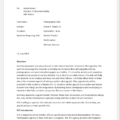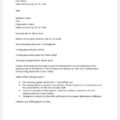Proposal Cover letter
I am writing this letter to request you about switching fields within the same department. I have been working for 5 years as a researcher in the following department. After my post-graduation, I joined this department as a researcher to work on a few projects, and the facilities were offered by the department.
After the completion of projects with distinction, I was able to secure a permanent position as a researcher and got to work on more challenging projects that honed my skills in the right direction. Now, I am capable of managing a team of two or more new researchers for completing small projects and contributing fairly to the progress of the department.
In addition, I also attend lectures on behalf of other researchers whenever needed. Thus, I have made myself available for every task the department can offer.
Now, I want to try another field as I heard about a vacancy. A group of 4 members is responsible for preparing proposals for grants. These proposals are submitted to the administration, and they evaluate the worth of the project through proposals and issue grants for the research work. I am well aware of the proposal writing method and the vacancy of one member can be easily filled by me. I hope you will consider me for this position.
Anxiously waiting for your response.
Regards,
Eric Martin
Researcher at XYZ Department
[EMAIL]
Introduction
Scientific research is the process of analyzing and evaluating the potential of materials and chemicals on living subjects. All the fields and departments of studies conduct the process of research which allows the reading of unknown potentials of the objects and their effects and influences.
It is a neutral, systematic procedure that makes use of already known knowledge to move further and discover more. It is rigorously planned and involves several steps before getting the end results. It includes the use of systematic and organized scientific methods for observation, analysis, and interpret data.
All the scientific research follows the same protocol of steps that cannot be moved up and down and are based on a hypothesis. The research revolves around the hypothesis and the net results either support or deny the hypothesis completely. A hypothesis is a clear, simple question that aims to answer the research question.
It is important for the hypothesis to be strong and testable because scientific research is not considered valid if, on repetition, it gives different answers. These hypotheses are tested through scientific methods which are rational, neutral, and in the end, should be able to prove or disapprove of the hypothesis.
Scientific research follows a systematic path that is planned earlier and later worked on. Following this path, data is obtained and evaluated through different methods and results are confirmed after multiple tests.
In addition to methods and techniques, statistical analysis is also conducted on data to draw an inference on the obtained result which will become law unless challenged by more rigorous research and testing. The results obtained can further be used by other scientists as a base for their research and the process continues. It never stops and keeps on adding new and modern research to the current regime.
Proposal
Scientific research proposals are different from other proposals as they have an organized manner of mentioning details that cannot be compromised. This method, when followed, provides a complete insight into the mind of the presenter regarding what they want to know from the research and what results are they expecting. It is presented as follows,
Title
The title of the proposal provides an insight into the work which will be performed in the future. Titles should be decided carefully as they are the first impression of the entire document. When deciding on a title, it is important to keep it concise and informative. Do not provide too much detail that it ruins the curiosity of the entire document or too short that it is unable to serve its purpose.
Abstract
Abstracts are usually small consisting of one paragraph or a defined number of words, but they are the most important part of any research document. Most scientists read an abstract to decide if they should read the whole document or not.
Abstracts include the research question for which it is being conducted and the goals which are decided to be achieved after research. It should be informative, concise, and accurate because most scientists conduct excellent research but cannot keep it hidden in their abstract. Therefore, it must be well-put and highly composed.
Introduction
An introduction is the part of the document which describes the topic in a broad sense and then narrows it down to the exact title and the importance to conduct research. Mention all the research with appropriate references from textbooks, articles, journals, and other sources that are recently happening in the work in the following field and the impact it would have. It is necessary to provide information about all the cutting-edge innovations happening in the field that gave you the idea for research.
Objectives
Although objectives and goals are briefly described in the introduction, this section focuses on the research question and related information that can be deduced from the research.
From one query, several others can be tested through techniques or statistical analysis thus, paving way for more and more research. In science, a good question is the one that opens doors to more questions in the minds of the reader.
Methodology
The section on methodology includes all the materials and methods that will be used during the research process. Materials are the chemicals, salts, or others used for various techniques whereas, methods are the techniques and procedures that are conducted on the sample or data.
Results & Conclusion
The last section focuses on the results that are anticipated to be obtained after the research process has finished. After obtaining results, statistics further draw a conclusive picture that is either in accordance with a hypothesis or in disagreement.



